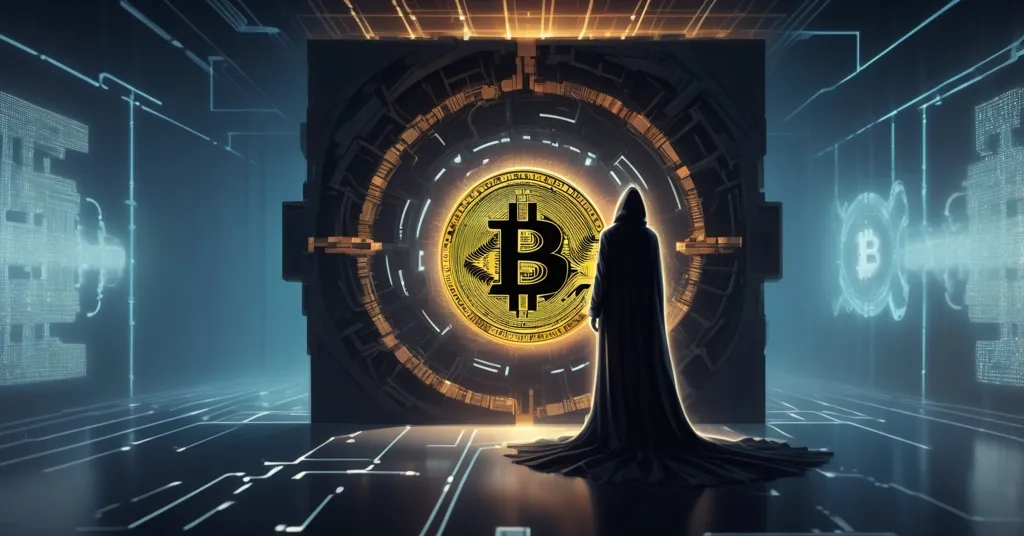Adam Back Warns: Quantum Computing May Reveal Satoshi Nakamoto’s Fate

Quantum Computing Could Unmask Satoshi Nakamoto: Adam Back’s Insights
At the “Satoshi Spritz” event in Turin, Adam Back, a key figure in the Bitcoin community, shared his concerns about the looming threat of quantum computing to Bitcoin’s security. He suggested that within the next two decades, Bitcoin users might need to shift their assets to quantum-resistant addresses, potentially revealing whether Satoshi Nakamoto is still alive.
- Quantum computing threatens Bitcoin’s cryptography
- Need for quantum-resistant addresses
- Possible revelation of Satoshi Nakamoto’s status
Quantum computing, with its potential to break current cryptographic systems, poses a significant challenge to Bitcoin. Adam Back, an early cypherpunk and founder of Blockstream, emphasized that Bitcoin users might need to migrate their assets to quantum-resistant addresses—addresses designed to protect Bitcoin from being hacked by advanced computers—within the next 20 years. This shift could have profound implications for Bitcoin’s security and the mystery surrounding its creator, Satoshi Nakamoto.
Back’s warning is rooted in the vulnerability of current cryptographic systems to quantum computers. He stated, “If the quantum computers are here, and people at universities and research labs have access, the network has a choice to either let people steal them or to freeze them—to outdate the current security method.” This stark choice highlights the urgency of preparing for a quantum-resistant future.
The potential movement of Satoshi’s Bitcoin holdings could serve as a litmus test for their creator’s existence. If quantum computers become a significant threat, Satoshi might need to move their funds to quantum-resistant addresses. Whether this action would reveal their status depends on the development and implementation of future privacy enhancements within Bitcoin. An anonymous early Bitcoin miner added, “Even if he is alive and holds the private keys, I do not think he’d move them. Based on how he acted so far I would rather expect him to let the community decide.” This perspective suggests that Satoshi’s actions, or lack thereof, could leave the decision to the Bitcoin community.
Addressing the technical aspects of this transition, Back mentioned Lamport signatures as a potential quantum-resistant solution. However, he noted their drawback of being data-intensive. Instead, he proposed a more feasible approach: a taproot-based implementation. Taproot, a recent upgrade to Bitcoin’s protocol, could facilitate a smoother transition to quantum-resistant signatures when the need arises. Taproot enhances privacy and efficiency, making it an ideal framework for implementing new cryptographic methods.
The Bitcoin community faces a critical decision: deprecate old addresses to prevent theft or allow funds to be stolen. This choice reflects the broader challenge of balancing security with the decentralized ethos of Bitcoin. As we navigate this technological frontier, the community’s response will shape the future of cryptocurrency.
While the threat of quantum computing may seem distant, the implications for Bitcoin’s security and the intrigue surrounding Satoshi Nakamoto’s identity add a compelling layer to the narrative. As we look to the future, the need for proactive measures and ongoing innovation remains clear.
Key Takeaways and Questions
-
What is the potential impact of quantum computing on Bitcoin?
Quantum computing could threaten Bitcoin’s current cryptographic security, potentially forcing users to move their assets to quantum-resistant addresses.
-
How might quantum computing affect Satoshi Nakamoto’s Bitcoin holdings?
If quantum computing becomes a threat, Satoshi might need to move their funds to quantum-resistant addresses, which could reveal whether they are still alive, depending on future privacy features.
-
What is the proposed solution for Bitcoin to become quantum-resistant?
Adam Back suggested a taproot-based implementation that would allow Bitcoin addresses to switch to quantum-resistant signatures when necessary.
-
What is the community’s likely response to the quantum computing threat?
The Bitcoin community may choose to deprecate old, vulnerable addresses to prevent theft rather than allowing funds to be stolen.
-
What role do privacy enhancements play in this scenario?
Future privacy enhancements could complicate the ability to determine if Satoshi Nakamoto is alive by allowing funds to be moved without revealing the owner’s identity.



